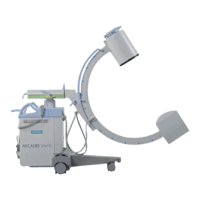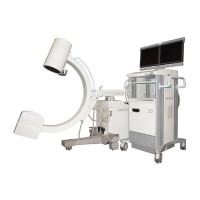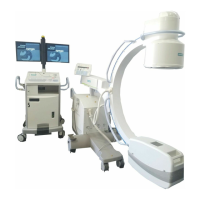ARCADIS Varic
SPR2-310.620.30.02.02 61
of 98
Documentation
Documentation
Introduction to archiving 0
After an examination or postprocessing, the images are stored in the local data-
base.
This section explains how to save images and patient data from the local data-
base and send them within the network, and how to export them to data media
or through the network.
The hard disk of your image system (local database) is not suitable for long-term
archiving of image and patient data.
Archiving data Using the Archive to function, you can save patient and examination data to an
archive via the network.
You should archive patient and examination data as a routine at regular intervals.
Exporting data The Export To... function allows you to write data to a removable storage
medium (CD/DVD-R) for short-term storage or transfer.
If your system is connected to a network, you can send patient and examination
data to other workstations via the network using the Send to.... function.
Importing data from
archive media
If you need archived data again at a later date, you can reimport them with the
Patient Browser.
Automatic transfer To make your working routine more effective, you can also have your patient and
examination data automatically written to data media that you have defined,
or sent to specific addresses in the network.
You can define the rules by and time at which automatic data transmission is to
take place.
Import/export in the
file system/USB
If you want to process or otherwise use images with other programs, you can
export them to a specific directory on the system hard disk or to a USB drive in
several image formats (DICOM, bitmap) (Export to Off-line).
In the same way, you can import images in DICOM format to your application
(Import from Off-line).

